Bees and Cross-Pollination In the beautiful tapestry of agriculture, where nature weaves its patterns with a complexity that often eludes the casual observer, bees play a central role in the narrative of fruit production, especially in the cultivation of sweet cherries. Among the diverse varieties of cherries that grace our tables, Coral Champagne cherries stand out for their exquisite taste and vibrant color. However, the journey from blossom to cherry is not a solitary one for varieties like Coral Champagne. It is a story of interdependence, cross-pollination, and the tireless work of bees.
The Mystery of Cross-Pollination
Coral Champagne cherries, unlike their self-fertile counterparts, are not self-pollinating. They require the pollen from companion varieties such as Bings, Brooks, or Tulares to fertilize their blossoms and set fruit. This process, known as cross-pollination, is essential for the production of fruit in many cherry varieties. But why is this so? The answer lies in the genetic makeup of these trees. Self-sterility in cherry varieties like Coral Champagne is a natural mechanism to promote genetic diversity, resulting in stronger, more disease-resistant trees and, consequently, better-quality fruit.
Bees: The Unsung Heroes of Cherry Orchards
Enter the bees, nature's premier pollinators. The role of bees in this delicate dance of cross-pollination cannot be overstated. As they move from tree to tree in search of nectar, they unwittingly become the messengers of life, carrying pollen from the stamen (the male reproductive organ) of one tree to the pistil (the female reproductive organ) of another. This transfer of pollen between different varieties is crucial for the fertilization of the blossoms of non-self-fertile cherry trees like Coral Champagne.
The Self-Fertile Varieties: A Different Tale
On the other hand, self-fertile cherry varieties such as Lapins present a different story. These trees do not require pollen from a different cherry variety to produce fruit. However, the presence of bees is still critical. Even in self-fertile varieties, the physical act of transferring pollen from the stamen to the pistil within the same flower or between flowers on the same tree is vital for successful pollination and fruit set. Bees, with their innate attraction to cherry blossoms, ensure that this self-pollination process occurs efficiently, guaranteeing a bountiful harvest.
A Symbiotic Relationship
This intricate relationship between cherry trees and bees highlights a symbiotic partnership where both parties benefit: the trees receive the gift of pollination, leading to fruit production, and the bees, in their quest for nectar, find sustenance. It is a natural collaboration that underlines the importance of bee conservation and sustainable farming practices that protect these essential pollinators. As we savor the juicy sweetness of sweet cherries, let us not forget the critical role played by bees in bringing these fruits from the orchard to our tables. By supporting local agriculture and advocating for bee-friendly practices, we contribute to the sustainability of this vital relationship, ensuring that future generations can continue to enjoy the fruits of this beautiful partnership.


